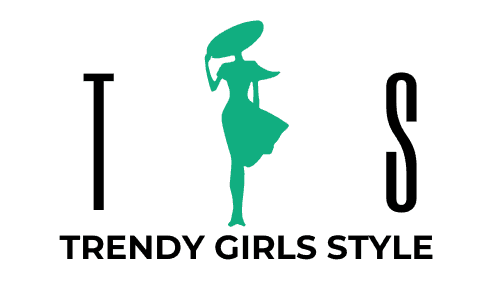
A shocking 1% annual fee can cost you $590,000 over 40 years, yet 80% of plan participants don’t know what they’re paying in hidden fees, according to Employee Fiduciary’s Mark S. Gottlieb.
This is the 401k trap that keeps millions of workers locked into mediocre returns while millionaires build wealth using completely different strategies.
Traditional retirement advice tells you to “max out your 401(k),” but the ultra-wealthy rarely follow this path. Instead, they use eight specific millionaire investment strategies that focus on real assets, business ownership, and alternative investments. Here’s exactly what they do—and how you can escape the 401(k) trap starting today.
The Hidden 401(k) Trap Most People Fall Into
Your 401(k) might be stealing your retirement dreams. Most people think they’re building wealth, but hidden fees are eating their money alive.

Here’s the ugly truth: 401(k) fees range from 0.5% to over 2% each year. That might sound small, but it’s huge. A 1% fee difference costs you $590,000 over your lifetime. That’s more than half a million dollars gone.
Key Point: Even a 1% annual fee can cost you over $590,000 in lifetime wealth due to compound growth loss.
These fees hide in plain sight. They’re buried in expense ratios and called things like “revenue sharing” and “12b-1 fees.” The Department of Labor requires companies to show these fees, but most people never look.
Key Point: Revenue sharing and 12b-1 fees are administrative costs that mutual funds pay to 401(k) providers, reducing your returns.
Want more bad news? The average 401(k) balance is only $148,153. The median is even worse at $38,176. That’s not enough to buy a decent car, let alone retire on.
Key Point: Half of all 401(k) participants have less than $38,176 saved, showing the system isn’t working for most people.
Your 401(k) also limits your choices. You get maybe 20-30 investment options. Compare that to thousands of stocks, bonds, real estate deals, and businesses you could invest in outside your plan.
Key Point: 401(k) plans typically offer 20-30 investment options versus thousands available in the broader market.
And the contribution limits? They’re a joke if you want real wealth. You can only put in $23,500 per year ($31,000 if you’re over 50). Rich people laugh at these limits.
Key Point: 2025 401(k) contribution limits cap most people’s tax-advantaged savings at $23,500 annually.
What 90% of Millionaires Do Instead of Relying on 401(k)s
Here’s what separates millionaires from everyone else: they don’t put all their money in 401(k)s. They build wealth through assets that grow faster than the stock market.

90% of millionaires invest in real estate. Not just their home. Investment properties, commercial buildings, and land that produces income every month.
Key Point: Real estate provides both monthly cash flow and long-term appreciation, creating two income streams from one investment.
High-net-worth people put 32% of their money in residential property and 21% in commercial real estate. That’s over half their wealth in real estate alone.
Key Point: Wealthy investors typically allocate 53% of their portfolio to real estate investments.
The ultra-wealthy spread their money even more. They put 47% in public stocks, 15% in private companies, and 17% in real estate. They don’t rely on one thing.
Key Point: Portfolio diversification across multiple asset classes reduces risk while maintaining growth potential.
Grant Cardone, a self-made millionaire, says it best: “People get rich because they produce revenue, not because they make little investments over time.” He means building businesses and buying assets that pay you.
Key Point: Active income generation through business ownership typically creates wealth faster than passive investment strategies.
Most millionaires didn’t get rich from their day job. They started businesses, bought rental properties, and invested in things their broke friends never heard of.
Key Point: Business ownership and alternative investments are common wealth-building strategies among high-net-worth individuals.
Strategy #1: Real Estate – The Millionaire’s Foundation
Real estate is the foundation of most millionaire portfolios. Here’s why: homes have gone up 10 times in price from 1940 to 2020. Your 401(k) can’t match that track record.

Real estate works because of supply and demand. People always need places to live and work. The government makes it hard to build new properties, so existing ones become more valuable.
Key Point: Zoning laws and building restrictions create artificial scarcity, driving up property values over time.
You have multiple ways to invest in real estate. Buy rental properties and collect monthly rent. Invest in REITs (Real Estate Investment Trusts) through your brokerage account. Try house hacking – live in one unit of a duplex and rent out the other.
Key Point: House hacking allows you to live for free while building wealth through property appreciation and rental income.
The tax benefits are incredible. You can depreciate your rental property each year, even if it’s going up in value. Use 1031 exchanges to sell one property and buy another without paying taxes.
Key Point: Real estate depreciation can offset rental income for tax purposes, creating tax-free cash flow.
Best of all, you can use other people’s money. Put 20% down on a $500,000 property and control the whole thing. If it goes up 5%, you made 25% on your money.
Key Point: Real estate leverage amplifies returns – a 5% property appreciation equals 25% return on a 20% down payment.
Strategy #2: Building Multiple Income Streams Through Business
Smart people don’t just save money. They create money. Building a business gives you unlimited income potential that no 401(k) can match.

Most ultra-wealthy people in groups like TIGER 21 made their money by starting businesses, not investing in mutual funds. They solved problems and got paid for it.
Key Point: TIGER 21 members typically built wealth through entrepreneurship rather than traditional investment vehicles.
If you’re self-employed, you get access to a Solo 401(k). This lets you contribute up to $77,500 per year – way more than regular employees. You wear two hats: employee and employer.
Key Point: Solo 401(k) plans allow combined employee and employer contributions up to $77,500 annually for self-employed individuals.
Start with what you know. Freelance your current skills. Consult for other companies. Build websites. Do bookkeeping. Sell products online. Every successful business started small.
Key Point: Service-based businesses often require minimal startup capital while providing immediate income generation opportunities.
Your business also gives you better tax write-offs. Home office expenses, business meals, travel, equipment – all deductible. W-2 employees can’t touch these benefits.
Key Point: Business ownership provides numerous tax deductions unavailable to traditional employees.
Strategy #3: Tax-Advantaged Alternatives Beyond Traditional 401(k)s
You’re not stuck with just a 401(k). Smart people use multiple tax-advantaged accounts to build wealth faster.

High earners use the backdoor Roth IRA strategy. You can’t contribute directly to a Roth IRA if you make too much money. But you can contribute to a traditional IRA and convert it to a Roth.
Key Point: Backdoor Roth IRA conversions allow high-income earners to access Roth benefits despite income limits.
Health Savings Accounts (HSAs) are retirement gold mines. Triple tax advantage: deductible contributions, tax-free growth, and tax-free withdrawals for medical expenses. After age 65, you can withdraw for anything and just pay regular income tax.
Key Point: HSAs offer the only triple tax advantage available in retirement planning.
SEP-IRAs and SIMPLE IRAs work great for small business owners. You can contribute more than regular IRAs and cover your employees too.
Key Point: SEP-IRAs allow contributions up to 25% of compensation or $69,000, whichever is less.
Don’t forget taxable brokerage accounts. No contribution limits, no withdrawal penalties, no required distributions. Complete flexibility with your money.
Key Point: Taxable investment accounts provide unlimited contribution capacity and complete liquidity without penalties.
Strategy #4: Alternative Investments the Wealthy Use
Rich people don’t just buy stocks and bonds. They invest in things most people never consider.

Private equity and hedge funds are popular with wealthy investors. These aren’t available to regular people, but you can invest in similar strategies through interval funds and private REITs.
Key Point: Interval funds and private REITs give retail investors access to institutional-style alternative investments.
Precious metals protect against inflation. When paper money loses value, gold and silver hold their worth. Many financial experts recommend 5-10% of your portfolio in metals.
Key Point: Precious metals serve as an inflation hedge and portfolio diversifier during economic uncertainty.
52% of investors under 35 own cryptocurrency with an average 9% allocation. Bitcoin has outperformed every other asset class over the past decade.
Key Point: Cryptocurrency has gained mainstream adoption among younger investors seeking high-growth potential assets.
Collectibles and luxury investments are gaining popularity. Art, classic cars, wine, watches, and rare books have all produced strong returns. 32% of billionaires plan to increase their art and antiques exposure.
Key Point: Alternative collectibles provide portfolio diversification and potential appreciation while offering personal enjoyment.
How to Escape the 401(k) Trap: Your Action Plan
You don’t have to choose between your 401(k) and wealth building. Use both, but do it smart.

First, always get your employer match. That’s free money you can’t get anywhere else. If your company matches 3%, contribute at least 3%.
Key Point: Employer 401(k) matching provides an immediate 100% return on contributed amounts up to the match limit.
Build a $100,000 emergency fund in accessible savings before going crazy with investments. This gives you peace of mind and prevents you from selling investments at bad times.
Key Point: Large emergency funds provide financial security and prevent forced liquidation of investments during market downturns.
Choose low-cost index funds in your 401(k). Look for expense ratios under 0.1%. Avoid target-date funds and actively managed funds with high fees.
Key Point: Low-cost index funds typically outperform actively managed funds over long periods while charging minimal fees.
Start diversifying beyond your 401(k) immediately. Buy your first rental property. Start a side business. Open a taxable brokerage account.
Key Point: Portfolio diversification across asset classes and account types provides multiple paths to wealth building.
Track all your investment fees annually. Add up expense ratios, advisor fees, and hidden costs. If you’re paying more than 0.5% total, you’re overpaying.
Key Point: Annual fee audits help identify cost reduction opportunities that compound into significant savings over time.
The Real Numbers: What This Means for Your Retirement
Let’s talk real numbers. Americans think they need $1.26 million to retire comfortably. But the median retirement savings for people aged 55-64 is only $185,000. That’s not even close.

Key Point: There’s a $1.075 million gap between retirement needs and actual savings for most Americans.
Here’s a comparison: Person A puts $500 monthly in their 401(k) for 40 years with 2% fees. They end up with $560,000. Person B puts the same amount in low-cost investments and real estate. They end up with $1.15 million. The difference? Over half a million dollars.
Key Point: Fee differences compound dramatically – 2% annual fees can cut retirement wealth by 50% or more over 40 years.
Real estate appreciation tells a different story. A $200,000 house that appreciates 6% annually becomes $2.1 million in 40 years. Add rental income and you’re looking at serious wealth.
Key Point: Real estate combines appreciation and cash flow, potentially creating multi-million dollar wealth from modest starting investments.
Business ownership multiplies wealth even faster. A business that grows 15% annually turns a $50,000 investment into $16.4 million over 40 years.
Key Point: Successful businesses can generate compound annual growth rates that far exceed traditional investment returns.
Conclusion
The 401(k) system wasn’t designed to create millionaires. It was designed to shift retirement responsibility from employers to employees. Don’t let it limit your wealth.
Get your employer match, but don’t stop there. Build real wealth through real estate, business ownership, and alternative investments that rich people use.
Key Point: The 401(k) system serves as a basic foundation, not a complete wealth-building strategy.
Start with one strategy this month. Calculate your 401(k) fees using the Department of Labor’s fee calculator. Research house hacking in your area. Look into starting a side business using your current skills.
Your future self will thank you for thinking beyond the 401(k) trap.
Key Point: Taking action on one wealth-building strategy immediately creates momentum for long-term financial success.






